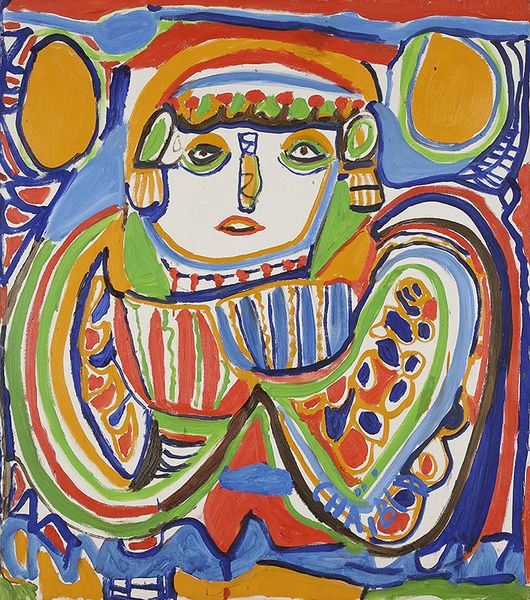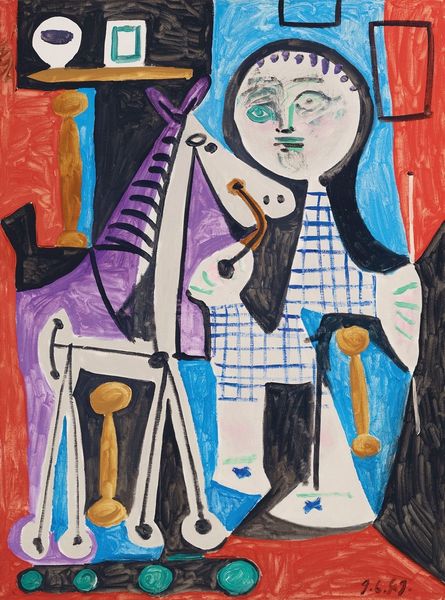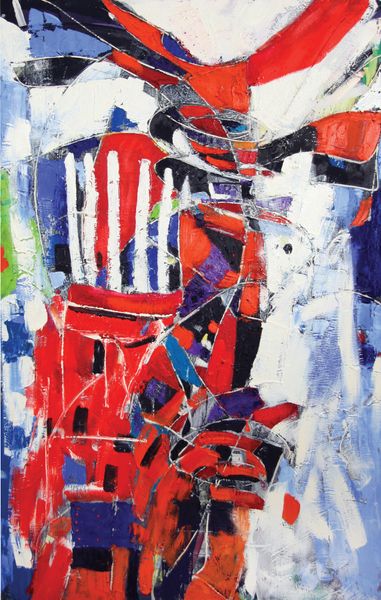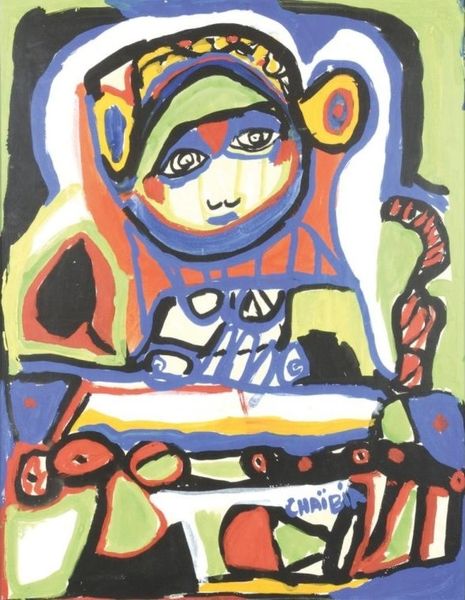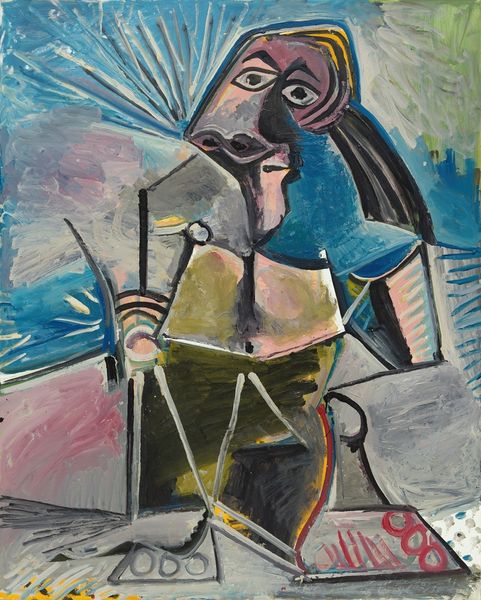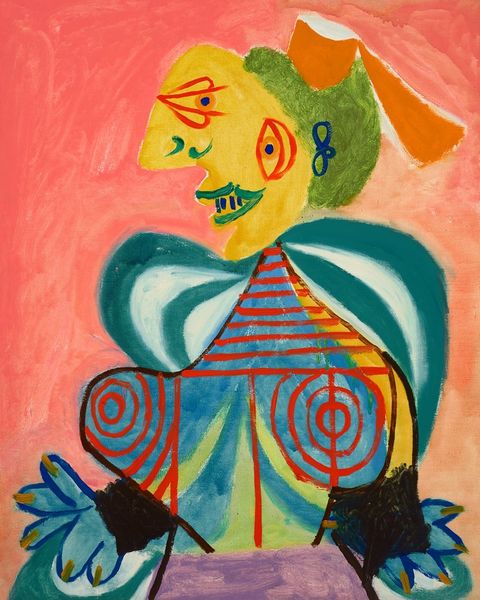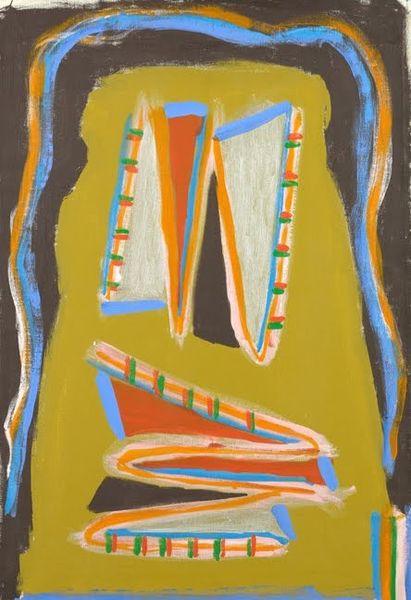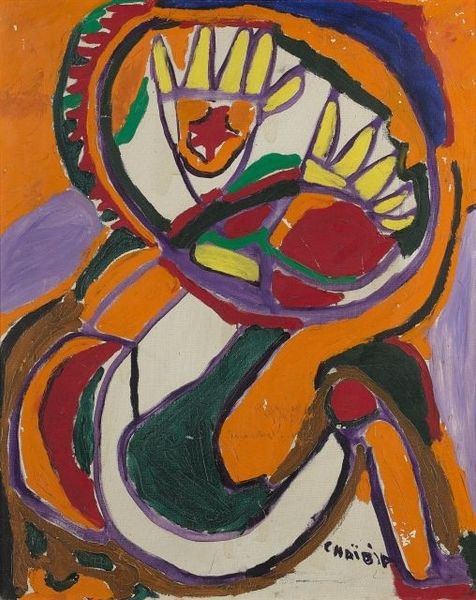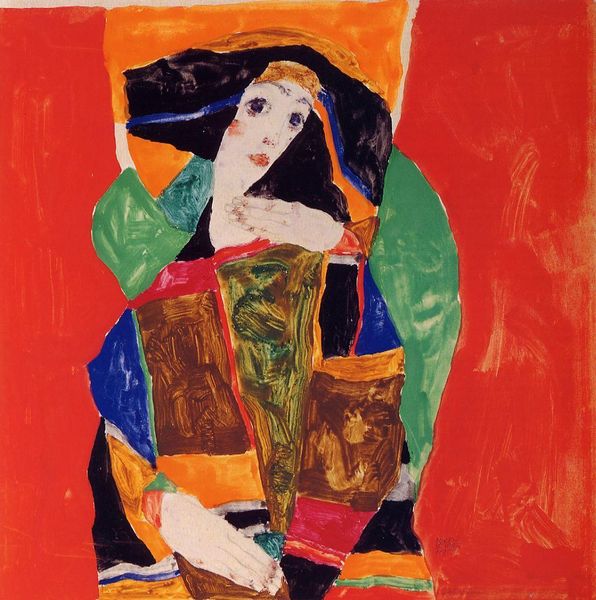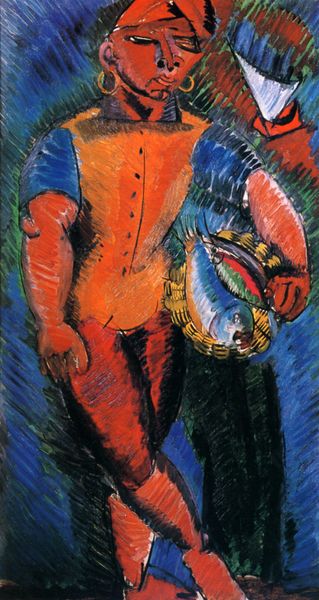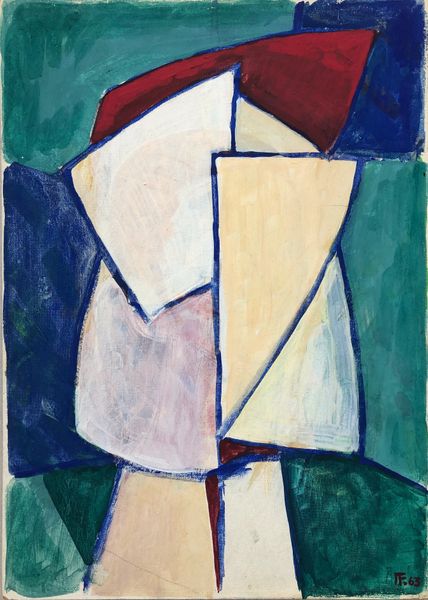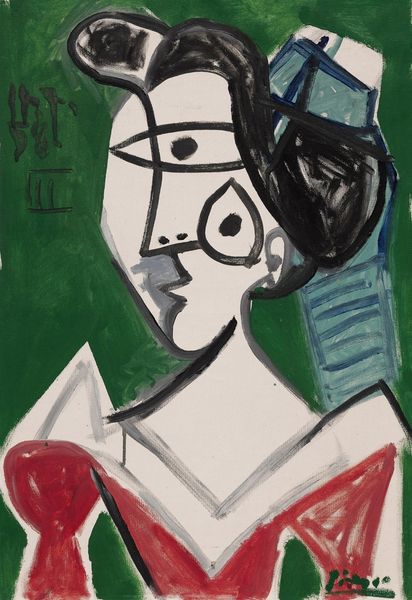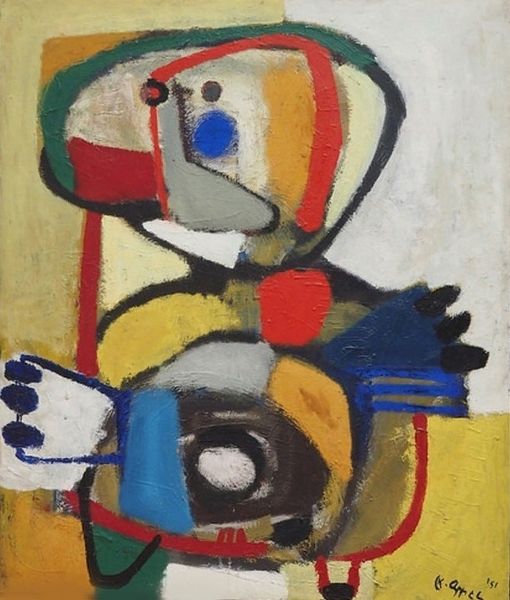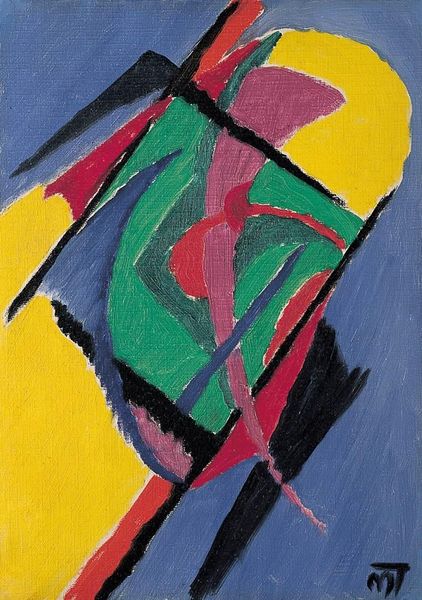
Copyright: Chaibia Talal,Fair Use
Editor: We’re looking at “Aïcha” by Chaibia Talal, painted in 1988 using acrylic paint. The first thing that strikes me is the use of such vibrant colours. What do you see in this portrait? Curator: I see a powerful statement on female identity emerging from a specific cultural context. Talal, a self-taught Moroccan artist, challenges Western art historical norms by depicting women from her own culture through her own lens. Notice the bold, almost Fauvist use of colour and flattened perspective. How might these artistic choices reflect Talal's position outside the traditional art establishment? Editor: That’s interesting. I hadn’t thought about it in terms of challenging the Western art establishment. Curator: Consider the time in which this was painted, 1988. Feminist art practices were gaining momentum, demanding representation and a deconstruction of the male gaze. Does this portrait resonate with those ideas? Editor: I guess it does. It’s not how I would usually see a portrait; it’s less about realism and more about something else... perhaps conveying the essence of Aïcha? The directness of the gaze also adds to that. Curator: Exactly! Talal's work is deeply personal, reflecting her lived experience as a woman in Morocco. What does it tell us about representation and self-expression beyond conventional portraiture? How does its naïveté or "artlessness" connect with ideas of authenticity and challenging high/low art boundaries? Editor: It’s made me think differently about how art can be a form of cultural and personal resistance. Curator: Precisely. Art can be a profound tool to express the authentic self!
Comments
No comments
Be the first to comment and join the conversation on the ultimate creative platform.
